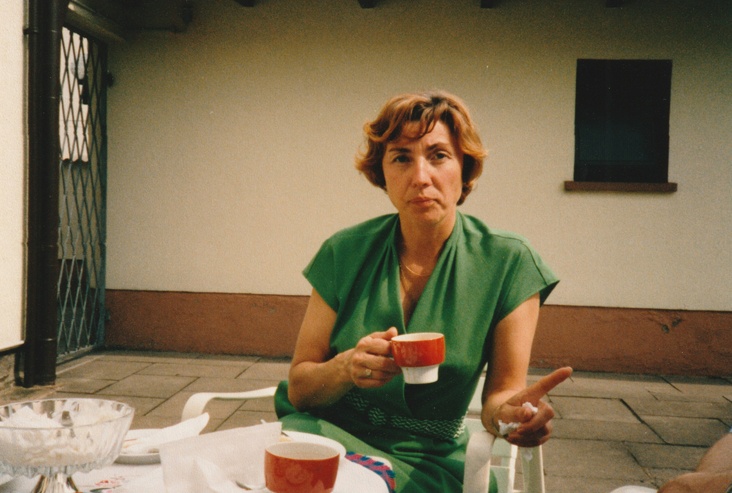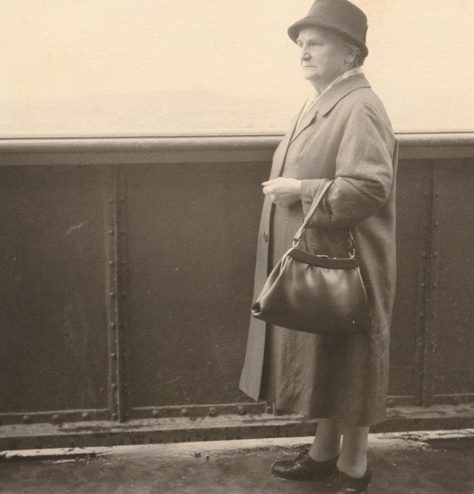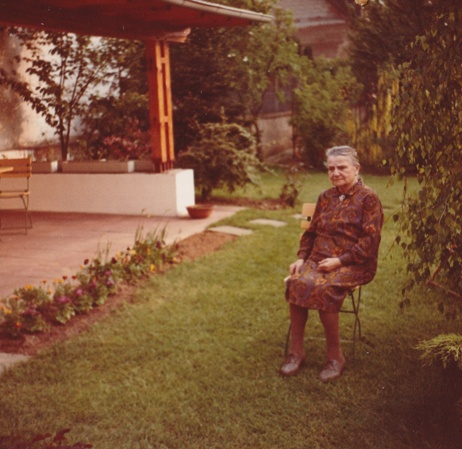In conjunction with the very recent publication of our new issue, “Literatur,” we offer a text on one of the great pioneer’s of the so-called genre of autofiction, Annie Ernaux. While Ernaux's books have been translated and read around the world, very little is understood about the crucial role that photography plays in her writing. Cultural studies scholar Hanna Engelmeier unpacks the shrewd art of translating image to text in Ernaux’s most well-known work, The Years (2008), offering a subtle meditation on the work of memory between these two media.
Annie Ernaux says that photos act as catalysts for her writing. It is photos of men and women – not of landscapes – that get her to write. “The photograph is nothing other than stopped time. But the photograph does not save. Because it is mute. I believe on the contrary that photography increases the pain of passing time. Writing saves, and cinema.” Ernaux has written a great deal, mostly while also working as a teacher. Publishing at a rapid rate in France since 1974, her books from the 1980s on have largely worked with autobiographical material.
Her books have become increasingly well known in Germany since 2017, three of them being available in translation by Sonja Finck. Ernaux’s books reached Germany through a door that Didier Eribon opened with his memoir Returning to Reims (2009), which likewise appeared in Germany after a long delay, and which analyzes social class via the familiar medium of family history, while sexual liberation is captivatingly narrated in the form of a coming out. In Returning to Reims, Eribon was intent on explaining the AfD but in fact turns to Bourdieu while also writing about his mother’s body, marked by factory work. One of his models in this was Annie Ernaux. She herself keeps it short: “I owe a lot to the sociology of Bourdieu, but I don’t ‘do’ Bourdieu.” Ernaux writes for the sake of memory – the rest we have to do ourselves. “To save […] the man in pajamas and slippers who wept every afternoon in the lobby of the old folks’ home in Pontoise, and asked visitors to call his son, holding up a piece of dirty paper on which a phone number was written.”
Elsewhere Ernaux talks about how writing, a serious endeavor, always frightens her: it is the “right place,” the place at which she turns to her memory. This is by no means an entirely personal act, but rather a visit to a particularly familiar archive. This archive is a fiction – one that can be consulted through memory like a card index. This fiction is necessary for getting the narrative underway. A single photo serves as a find from this archive, an individual everyday item requiring description and analysis. A photo of this kind is a good beginning: a tangible thing about which something can be said. It starts with a description. You are not alone with an empty page; the photo is right here.
A black-and-white photograph from September 5, 1965 is labeled “Mutti on the Eiffel Tower.” The author of the image is Ingeborg Loh (1926–2019), and “Mutti” is presumably her own mother. We see a small, somewhat stocky woman with a hat, calf-length coat, and a large handbag. She wears flat shoes and is depicted in profile. All that is visible of the Eiffel Tower is a large steel girder. Paris must be in the blurred background of the image. “Mutti” looks neither impressed nor excited. The photo belongs to a very extensive photographic œuvre that was only recently discovered by the Frankfurt-based painter Karsten Loh in the house of his Aunt Inge, who had moved into a nursing home. It is a photographic history of everyday life in West Germany that she had been working on since the 1960s. Ingeborg Loh lived in Goldbach, Aschaffenburg; her work is now being presented in small exhibitions, and her nephew continuously posts a selection of her photos on Instagram and Twitter. They include many travel photos, snapshots of family celebrations, and documentation of the installation of a new hunting fence. The protagonists are middle and working class. Landscape and architecture appear more rarely; the focus is on people who appear in the descriptions of the photos largely just with first names: “Visit by Erika and Traute, June 8, 81”; “Patty and Brian off to the Motorcycle World Championship in Goldbach, April 15, 79”; sometimes even just something like “Frau Hugo, July 27, 85.”
These photos and their inscriptions provoke intrigue; their brevity is suggestive. Just by looking at what remains lying around in your own family – brownish-yellow colored memories in albums, shoe boxes, cardboard cartons – you start to think about how to describe it all. What can be seen in them, what kind of stories from what kind of country are visible?
When Ingeborg Loh was on the Eiffel Tower with her Mutti, Ernaux’s first visit to Paris wasn’t so long in the past; it was not until 1960, when she was 20, that she traveled there for the first time from the small town of Yvetot in Normandy. At that time she was still called Annie Duchèsne and had recently returned from the UK, where she had spent a summer working as an au pair. The family she worked for pronounced her name the English way, thus sounding like “any” in the ears of their au pair, who at the time felt quite comfortable disappearing into the broad non-differentiation of that word. The “girl of ’58” that she once was and who is the subject of her book Mémoire de fille (Memory of a Girl, 2016) was still very much close by. This girl is the daughter of working-class people who had worked their way up to become owners of a general store. They have little formal education. Wanting their daughter to go further than they did, they make it possible for her to get a good school education and go to university, so that she can become a teacher. The “better life” that is thus opened up to their daughter is one in which she is constantly confronted by her background, which she learns to become ashamed of. She calls to another girl, a friend she works with as an educator in a summer camp, who answers: “What? No! It’s not like we herded pigs together!” The girl of ’58 feels secure neither in her first world, that of her family, nor in her second world of education and advancement. She thus accepts even the shabbiest kind of company, and “the horror of how bad I felt never diminishes, a dog who comes begging for affection and gets kicked.”
Another photo shows Ingeborg Loh’s mother in a garden in 1970, sitting limply on a garden chair at the right edge of the picture, hand in her lap, trying to bring her knees together (“Mutti, May 1970”). The mother seems to have aged even further. Wearing a dress made of a firm fabric along with thick stockings, she could be about 70 years old. She is unsmiling and seems to simply allow the photo to take place. There is no information about the place and the occasion. Perhaps a family celebration? On the left of the picture is a veranda, at its front are flower beds. The garden is well kept. There’s nothing special about any of this. But it is exactly this that is captured and recognizable – and it is here that the success of Ingeborg Loh’s pictures lies. It’s the familiarity. Is this something you want to see? That you want to recall? The right question is perhaps whether you can recall. Loh photographed her environment, small-town social life, middle-of-the-road residential areas. These scenes can be sensed as images of a narrow world that you can distance yourself from via a camera. But it is also visible that they are photos from within this milieu, caring and uncondescending portraits. Loh’s history of West Germany from the spirit of the snapshot and Ernaux’s view of the world of her origins are connected by this pointing gesture: look, judge for yourself.
Every psychoanalyst says you should not speak about yourself in the third person, while “woke people” say you should not speak about other people in the third person; you should speak for yourself, it is said. Ernaux has found a way to represent herself in the third-person singular. Her book The Years begins with a montage, an inventory of seemingly subjective memories. Sometimes they consist only of subtitles for pictures (“Simone Signoret’s face on the poster for Thérèse Raquin” ), sometimes of scenes (“the newborn flailed in the air like a skinned rabbit in the delivery room of the Clinique Caudéran Pasteur” ) or “outdated expressions, heard again by chance, suddenly precious as objects lost and found again, a wonder how they’ve been saved from oblivion.” Ernaux emphasizes the fragmentary character of her memory through her writing style, “which only in the process of writing […] acquires a – fictitious – coherence.”
It is the opening of an autobiography that refuses the first-person singular and whose theme is (among others) the search for a personal pronoun able “to assemble these multiple images of herself, separate and discordant, thread them together with the story of her existence.” Ernaux settles on the pronoun “one,” as “there is something too permanent about ‘I,’ something shrunken and stifling, whereas ‘she’ is too exterior and remote.” The “one” as the third figure between “I” and “she” seems to very easily create those forms of autofiction that are also called collective autobiography.
Ingeborg Loh was single and worked as a secretary at Farbwerke Höchst. Her everyday history in snapshots was first shown publicly in March this year at the Fokus Lyrik festival in Frankfurt am Main. Apart from its strong artistic quality, which was also important, this history must also have provided an attractive contrast—n Intimate Stranger: Our West Germany 1965 and thereafter. Loh’s work is perhaps also a collective photo album, concealing most things both regarding the life of Ingeborg Loh – who must have constantly been in the company of other people, while also being described as “single” – and about the lives of her subjects. The biographies of those who by 1965 had already retired are tainted by war and National Socialism. It is an accessible work, from which this lack of knowledge roars from each possible background. It is a work that seems to be pressing for text. On Instagram, “Visit by Uschi & Friedhelm, 1977” is the first picture of Ingeborg Loh’s to have been posted. They are dressed very formally. Friedhelm wears a black tie under his black sweater, Uschi a black-and-white dice-pattern dress. Did they make a detour on the way back from a funeral? While such puzzles can also be ignored, it could be stated that Ingeborg Loh’s photo albums are not only occasions for storytelling for those who came after her, but also constitute her autobiography. No matter what fictions emerge from her pictures, they are connected by the fact that Loh was present at this and that place, finger on the shutter button.
In A Man’s Place, Ernaux notes that, while writing the book, she was constantly correcting class tests and creating model essays “because that’s what I’m paid to do.” She also cared for two young sons who remain nameless in all her stories. Ernaux speaks for herself, and anyone who wishes to can engage with this for the time it takes to read the text. She reports on the seminal figures of her life, her mother and father, who are on the border to another class: “His greatest satisfaction, possibly even the raison d’être of his existence, was the fact that I belonged to the world which had scorned him.”
On the cover of the German edition is an almost transparent photo showing Ernaux and her cousins on the first floor of the house where their parents owned their business. The father is not pictured anywhere in the book. It is possible to find photos of him. There are several available, and this would be perfectly valid. But it is also quite possible to take the text and find your own images.
Translation: Matthew James Scown
Hanna Engelmeier is a research assistant at the Institute for Advanced Study in the Humanities Essen.
Notes



